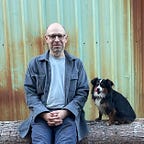Kristallnacht: Fear, Illusion, and A Young Man with a Gun
An autocrat bent on subverting societal norms. A country on edge, anxious for stability but in thrall to a myth. And an angry young man with a gun.
The tinder, the kindling and the match. The actors were Sturmtruppen and Feuerwehrmann, not Antifa or Proud Boys. The setting was towns like Karlstadt and Kassel, not Charlottesville or Kenosha. Eighty-two years ago, they came together to spark a searing and unforgettable performance. November 9th and 10th, 1938: Two nights of fire, destruction, screams and giddy laughter. And everywhere, littering seemingly every street like a dusting of poisoned snow, lay shards of broken glass: Kristallnacht.
Kristallnacht was the rest of the world’s last and best glimpse into what Nazism had made of Germany. A country that had prided itself on tradition, order and the rule of law had become a leading light of ethnic hatred. If the world needed to be convinced of the destructive power of image and illusion, here it was, bright as the domes of Germany’s synagogues as they burned. And while the events of Kristallnacht played out decades ago, the questions it posed — who is allowed to participate in society? is silence complicity? — may be more alive in the United States now than at any other time in the nation’s history.
